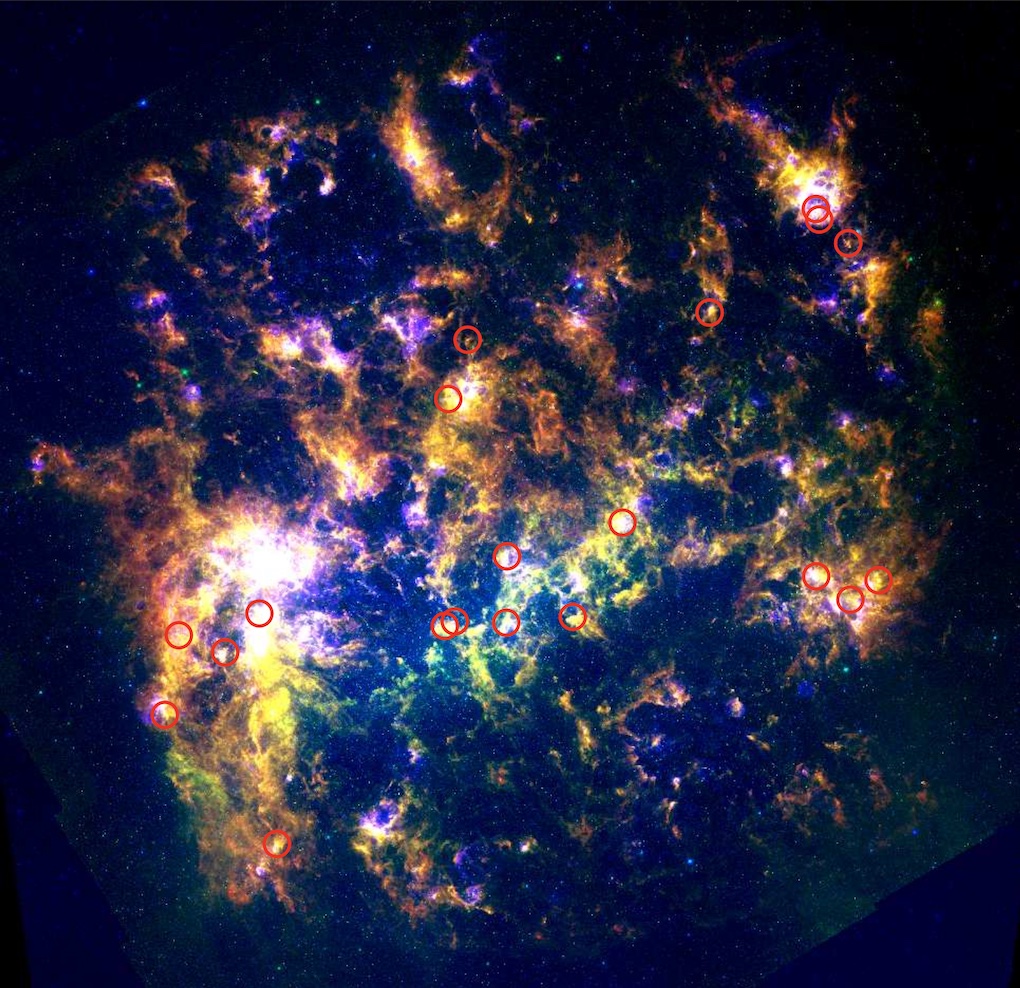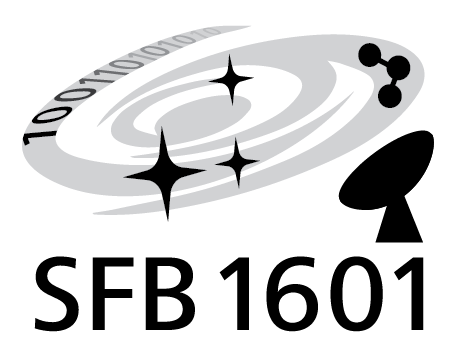Project leaders: Belloche, Arnaud (MPIfR); Schilke, Peter (PH1)

A1 will study the physics and chemistry of star forming regions with low metallicity at high angular resolution using interferometers such as the Atacama Large Millimeter/submillimeter Array (ALMA) and the NOrthen Extended Millimeter Array (NOEMA). It consists of two parts, one focusing on sources in the outer Galaxy beyond the Solar circle and the other one targeting star forming regions in the Large and Small Magellanic clouds (LMC and SMC). Both types of environments have low metallicities but various levels of UV radiation and cosmic-ray flux. The outer Galaxy part will investigate the impact of metallicity on the chemical composition of hot molecular cores by comparing to well-studied sources in the Galactic center and the solar neighborhood.
The LMC/SMC part will focus on the star formation properties of high-mass star-forming regions in the LMC/SMC, using ALMA, ATCA (and in the future MeerKAT/SKA), larger scale studies with CCAT-p (B2), APEX and archival data to get a coherent picture. We want to investigate if the different environmental conditions modify the properties of star formation, such as timescales, clump mass function, mass flow and feedback, and will also use the chemical composition as tracer. The observational results will be compared to simulations conducted in A5 and B6.

2025
Extended atomic carbon around molecular clouds (Corrigendum) Journal Article
In: A&A, vol. 702, pp. C1, 2025.
Protostars at Subsolar Metallicity: First Detection of Large Solid-state Complex Organic Molecules in the Large Magellanic Cloud Journal Article
In: Astrophysical Journal, Letters, vol. 992, no. 2, pp. L30, 2025.
ALMA Observations of Molecular Complexity in the Large Magellanic Cloud: Probing the Star-forming Region N 160 Journal Article
In: Astrophysical Journal, vol. 991, no. 1, pp. 59, 2025.
Extended atomic carbon around molecular clouds Journal Article
In: Astronomy & Astrophysics, vol. 696, pp. A148, 2025.
2024
High-mass star formation across the Large Magellanic Cloud. I. Chemical properties and hot molecular cores observed with ALMA at 1.2 mm Journal Article
In: A&A, vol. 688, pp. A3, 2024.
References
- Belloche, Garrod, Müller, Menten, Medvedev, Thomas, and Kisiel, “Re-exploring Molecular Complexity with ALMA (ReMoCA): interstellar detection of urea”, A&A 628, A10 (2019).
- Belloche, Maury, Maret, Anderl, Bacmann, André, Bontemps, Cabrit, et al., “Questioning the spatial origin of complex organic molecules in young protostars with the CALYPSO survey”, A&A 635, A198 (2020).
- Bonfand, Belloche, Garrod, Menten, Willis, Stéphan, and Müller, “The complex chemistry of hot cores in Sgr B2(N): influence of cosmic-ray ionization and thermal history”, A&A 628, A27 (2019).
- Garrod, Belloche, Müller, and Menten, “Exploring molecular complexity with ALMA (EMoCA): Simula- tions of branched carbon-chain chemistry in Sgr B2(N)”, A&A 601, A48 (2017).
- Gieser, Beuther, and 31 co-authors including, Möller, Menten, and Schilke, “Physical and chemical structure of high-mass star-forming regions. Unraveling chemical complexity with CORE: the NOEMA large program”, A&A 648, A66 (2021).
- Jørgensen, Belloche, and Garrod, “Astrochemistry During the Formation of Stars”, ARA&A 58, 727 (2020).
- Motte, Nony, Louvet, Marsh, 13 co-authors including, and Schilke, “The unexpectedly large proportion of high-mass star-forming cores in a Galactic mini-starburst”, Nature Astronomy 2, 478 (2018).
- Sadaghiani, Sánchez-Monge, Schilke, Liu, Clarke, Zhang, Girart, Seifried, et al., “Physical properties of the star-forming clusters in NGC 6334. A study of the continuum dust emission with ALMA”, A&A 635, A2 (2020).
- Sewiło, Charnley, Schilke, Taquet, Oliveira, Shimonishi, Wirström, Indebetouw, et al., “Complex Or- ganic Molecules in Star-Forming Regions of the Magellanic Clouds”, ACS Earth and Space Chemistry 3, 2088 (2019).
- Sewiło, Indebetouw, Charnley, Zahorecz, Oliveira, van Loon, 8 co-authors including, and Schilke, “The Detection of Hot Cores and Complex Organic Molecules in the Large Magellanic Cloud”, ApJ Letters 853, L19 (2018).
